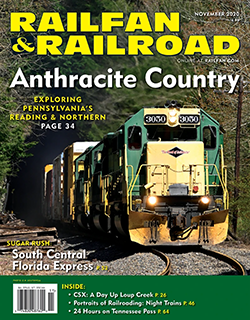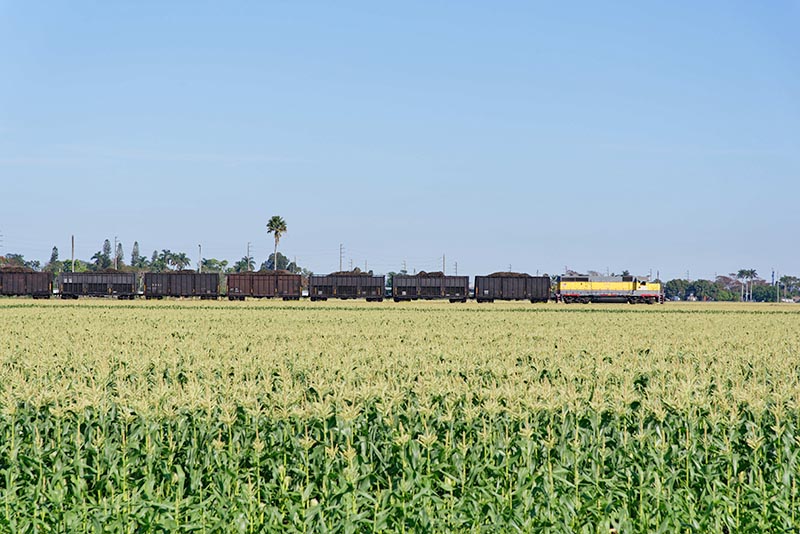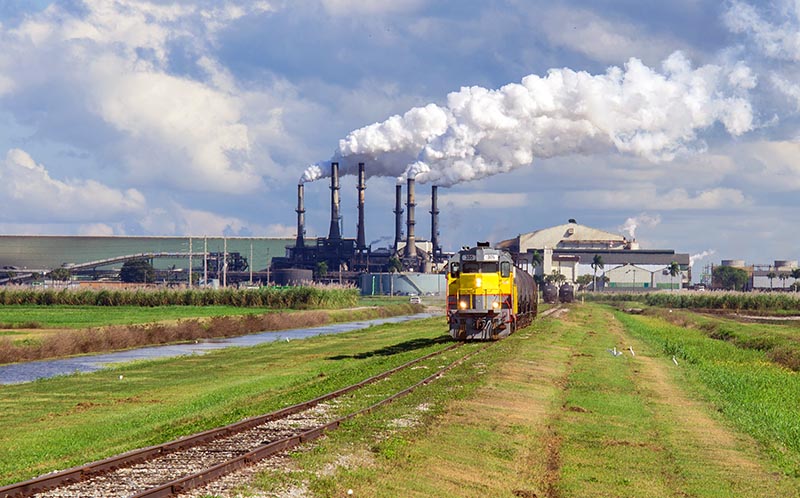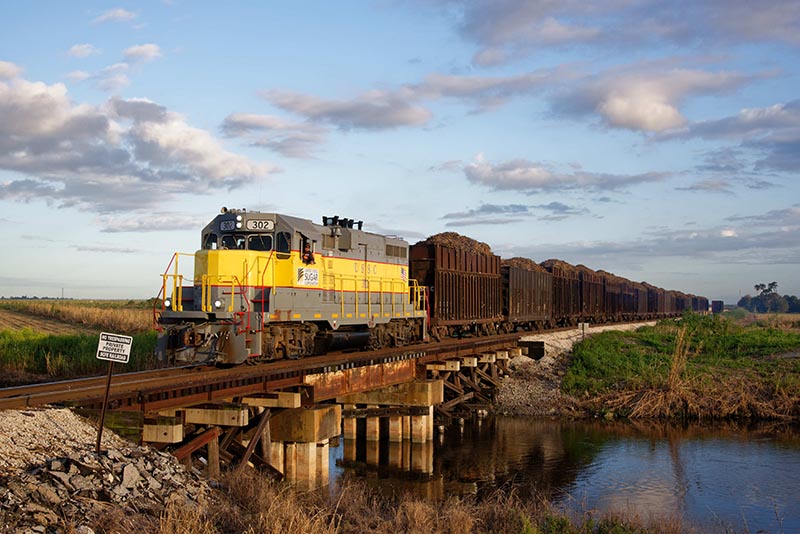 By Barton Jennings/photos as noted
By Barton Jennings/photos as noted
For many years, almost 300 miles of track have been quietly operating in what some describe as a no-man’s land south of Lake Okeechobee and between the busy Florida cities of Palm Beach and Fort Myers. However, the recent announcement by the track’s owner, United States Sugar Corporation, that it restored ex-Florida East Coast Railway steam locomotive 148 has led some people to try to explore this land of sugarcane and alligators. What they find is often confusing, a mix of regular freight railroading and heavy seasonal cane operations. They also find that most of the operations are just out of eyesight, occurring around the sugar mill at Clewiston, and at the almost 50 loaders deep within the cane fields. However, for those who know the railroads, there is also a great opportunity to enjoy the railroading — thus, a clue about Clewiston.
The History of Sugar at Clewiston
Clewiston is the key to the railroad operations. The town was founded in 1922 by the Clewiston Development Company, owned by many of the same principals involved with Moore Haven & Clewiston Railroad. This railroad was built from the Atlantic Coast Line connection at Moore Haven to Clewiston and soon leased by ACL, extending the ACL route that already operated south from Sebring, Fla. This ACL line had been built to reach the new winter tourist destinations in Florida’s scenic Highlands Region, as well as the many vegetable farms opening across southern Florida at about the same time. ACL directly linked this area to the markets of the Northeast through its connections in Richmond, Va.

GP40-2 505 is shoving out of the yard at Bryant onto the main line on February 5, 2019. Michael Peverett photo
By 1924, Bror G. Dahlberg, president of Celotex Corporation of Chicago, began to invest in the Clewiston Development Company, acquiring land along the south side of Lake Okeechobee. Dahlberg needed fiber for his wallboard and had been using waste bagasse (processed sugarcane with little commercial use). Disease in his Louisiana holdings led him to south Florida, and he and other investors formed Southern Sugar Company, chartered in December 1925. The new firm planted sugarcane and built a sugar mill at Clewiston. However, several years of bad weather and the Great Depression led to a change, and U.S. Sugar took over on April 28, 1931. Under the leadership of Charles Stewart Mott, vice president of General Motors, the company was turning a profit by 1941.
Over the years U.S. Sugar has owned several mills, but now only the one at Clewiston is needed due to numerous efficiency improvements. The company has also had to fight to survive, as there have been several attempts to buy the sugar mill and close all the farming operations in an effort to restore the land as part of the Everglades. However, it has survived due to the economic importance of the mill to the region.
Today, U.S. Sugar is owned by the Charles Stewart Mott Foundation, the Mott Children’s Health Center, the employees, and the company’s pension fund. The firm not only produces sugar and related products, but it also grows half of Florida’s sweet corn crop and owns Southern Gardens Citrus, producing up to 90 million gallons of Florida orange juice annually. Clewiston is still the base of operations for the company, with corporate offices, the mill, railroad shops, and many other facilities here. Because of this, Clewiston features a number of restaurants, hotels, stores, and other businesses not found in many of the surrounding communities. The town has also become a center for fishing on Lake Okeechobee, exploration of the nearby Everglades, and other recreational activities.

USSC 305 switches tank cars at the Sugar Cane Growers Cooperative plant in Belle Glade on December 22, 2016. Alex Keth photo
The Railroads of U.S. Sugar
Since the beginning, the key to U.S. Sugar’s success has been the use of the railroad to efficiently move product, and the company’s railroads have also long been an attraction for rail enthusiasts. This comes from a combination of interesting equipment and operations, a peak of activity during the winter tourism season, and the unique nature of the railroads.
Nowhere else in the U.S. in 2020 does an agricultural company use railroads to move this volume of crops from the field to the processing facilities.
However, the railroads of U.S. Sugar Corporation confuse many people, as they are really two different operations. South Central Florida Express is a common carrier railroad operating the Sebring to Clewiston to Fort Pierce route, along with the branch to Okeelanta, all in Florida. The second rail operation is the private industrial railroad that is “not part of the general railroad system of transportation,” according to the Federal Railroad Administration. The company also operates two dozen locomotives shared by the two operations. Because of this, many people think the two operations are one…



